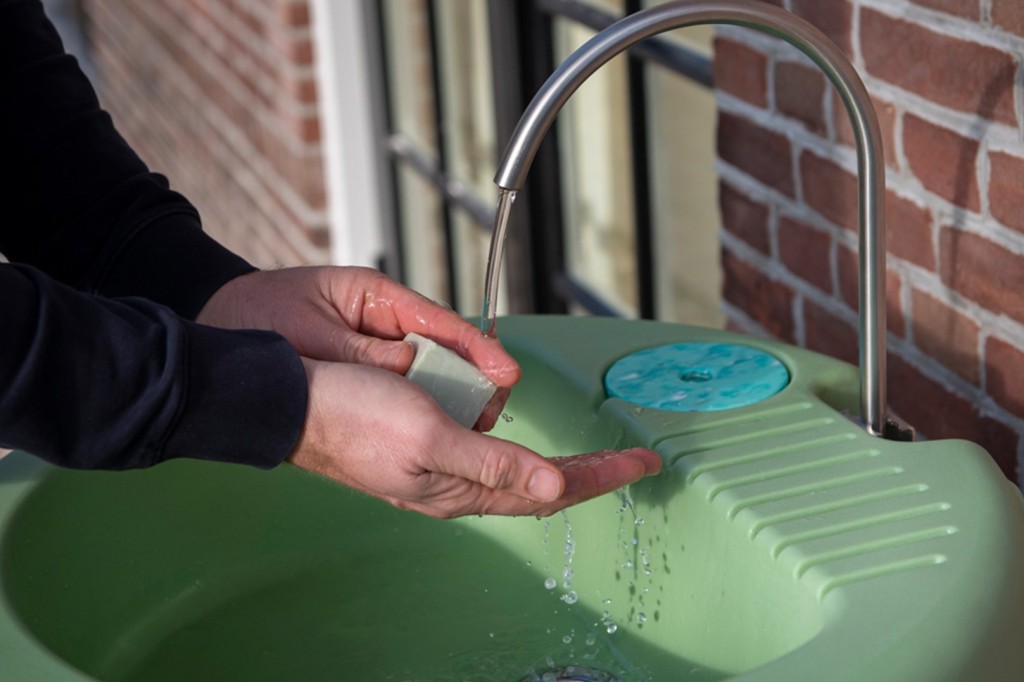
There is only one sustainable source of water for the garden and that’s rain water. If you’d like to install a rainwater butt or rain barrel in your garden here’s a simple guide on your options and what to consider when installing one.
Nothing mentioned in this article has been sponsored. It’s all just my own personal opinion. If you like your sources to remain independent then please;
share this article, or
buy me a coffee on Ko-fi, or
make a one-time donation via Paypal
What to look for in a Rainwater Butt
Design
You’ll find rain barrels in pretty much every garden centre now – and even some discount supermarkets. They tend to look quite utilitarian and come in bog standard green, which is fine if it’s not prominent in the garden, but if you’d prefer something a bit sexier, check these ones out!
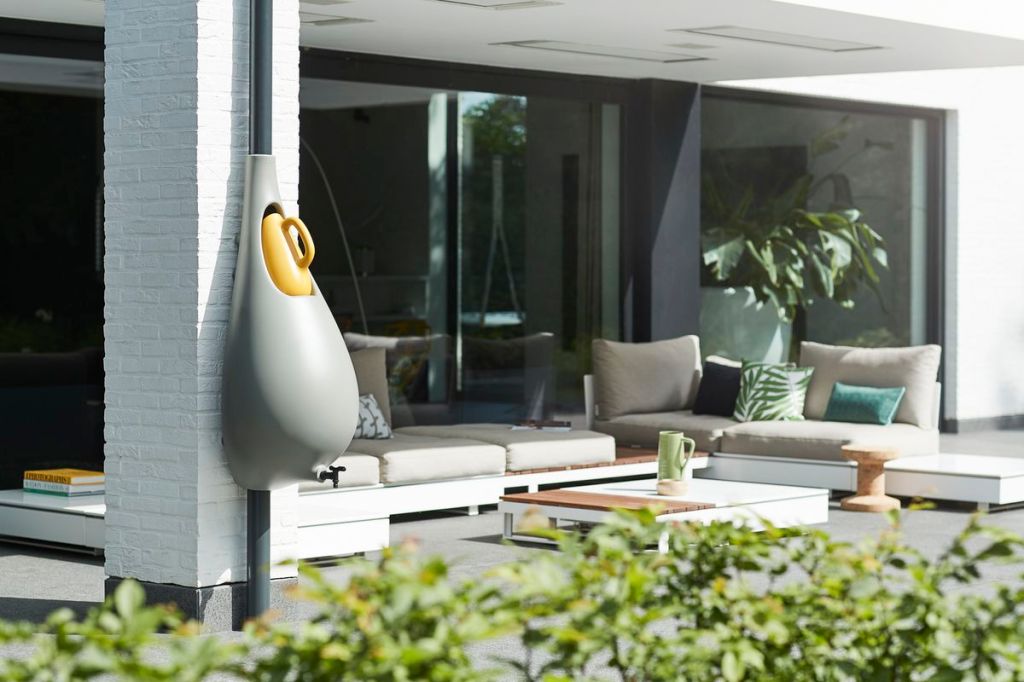
The organically shaped 70litre raindrop rain barrel from Elho mounts directly onto the wall and comes with a 5L watering can. I haven’t seen one on sale in Ireland but I know their pots are widely available here so they might order in a rainwater butt for you if you ask.
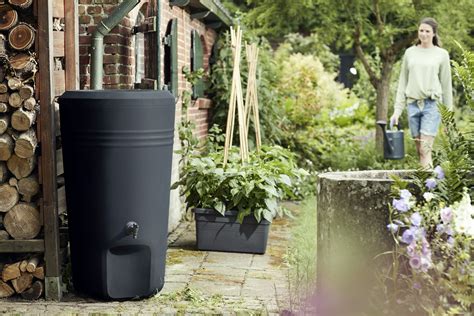
Or even better buy their rainwater butt made from recycled plastic.
There’s also a wide range of sleek, modern rainwater butts on the website of Water Butts Direct UK
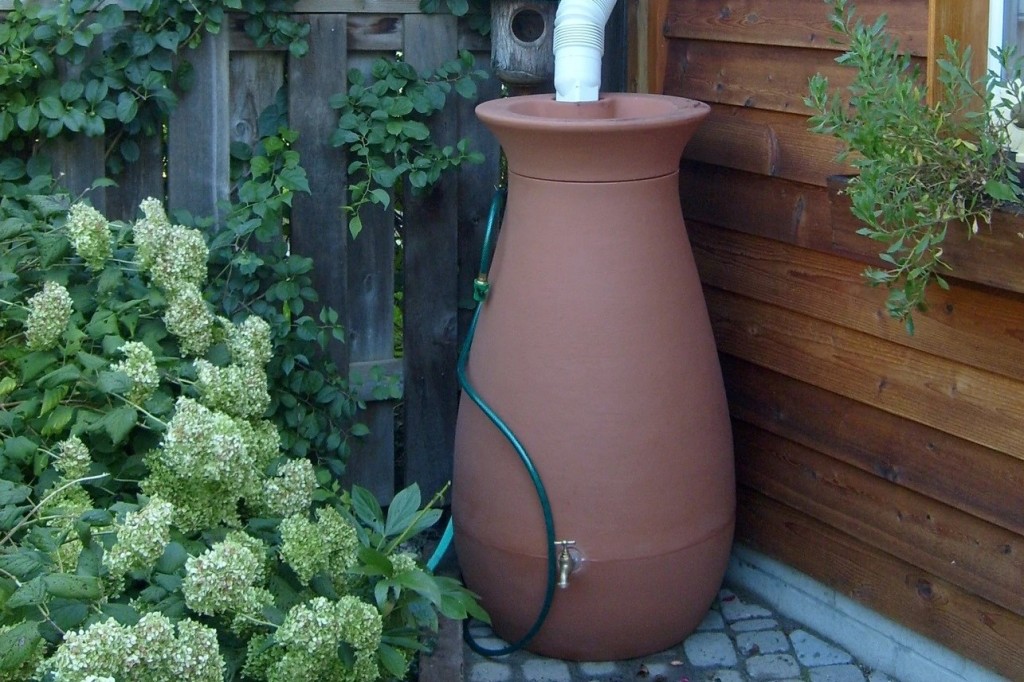
Most rain barrels are made of plastic but they they don’t have to look like it. Here is a beautiful terracotta-esque rainwater butt, available from Green Fingers in the UK. I’ve seen it offered by other UK retailers but none in Ireland unfortunately.
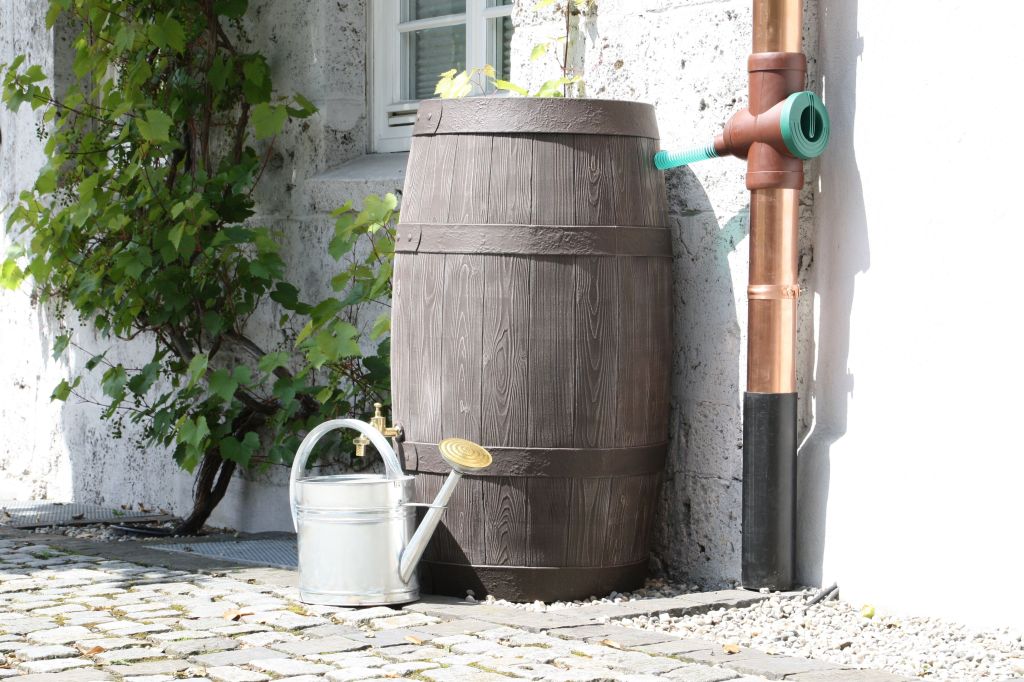
If you want to have 100% plastic-free rain barrel then plumb for one made from a repurposed oak whiskey barrel. In Ireland these are available from Beara Water Servicesin Kerry or Simon Architectural in Westmeath.
At the top of the page you’ll see a photo of a clever rainwater butt with a sink and tap, made by the aptly named Dutch company Raintap
If you need something on a larger scale check out Irish company Tanks.ie who do large-scale rainwater harvesting equipment.
If you’re not to fussy of the look of your rainwater butt you can often find them for sale second-hand.
Height
Whatever rainwater butt you go for make sure you can easily fit your water can under the tap.
Some rainwater butts come with stands to facilitate this but other need to be lifted up on a support or fixed to the wall at a particular height.
If your rain barrel doesn’t have a tap fitted at the very bottom of the barrel it will never be drained down fully. This may mean that the bottom section will need to be pumped out once in a while to prevent it going stale.
Quality
It may be hard to see the difference in cost between rainwater barrels but when the one you own splits at the front and floods your flower bed you very quickly appreciate quality – something I found out to my detriment.
Quantity
We’ve a fairly big garden and in the summer months even a 210L butt gets drained dry. If you’re serious about growing fruit and veg then consider install two rain barrels or one very large one.
Locating a Rainwater butt
Place your rain barrel near a power source
Obviously you’ll be placing your rainwater butt beside a downpipe but if you have a choice chose a downpipe that’s in sun or near an external socket.
If you locate your rainwater butt in the sun you can use a solar powered pump to feed the water into a hose for use in the garden. If that’s not possible then an external socket will let you do achieve the same result with an electric pump. Without a pump your only option is to use watering cans, which can be tiring if you’ve a large garden.
Place your rain barrel next to a large roof
Most people connect a rainwater butt to their house, which makes perfect sense. Don’t bother to feed a rainwater butt off a shed roof, I tried this and although it did fill over winter the surface area of the shed’s roof was too small for any useable quantity of water during the growing season.
Connecting a Rainwater butt
There are a few options to connecting your rainwater butt. You can
- cut your downpipe short and have it discharge directly into the barrel. If you do this it’s best to have the end of the downpipe just inside the lid of the barrel, otherwise you can end up with a lot of debris inside the barrel, which can lead to bacteria spoiling the water. With this arrangement the barrel tends to have an overflow that discharges into the drain when full.
- fit a rainwater diverter kit to your downpipe. This diverts water into the barrel until it’ll full, after which it will send water down the drain as before.
The DIY store Woodies have very helpfully posted a video on how to install a rainwater butt.
Diverter kits
This kits are surprisingly expensive to buy separately to the rainwater butts so make sure a downpipe diverter comes with the one your purchase and that it contains all the parts you need.
If you need to buy one you might be lucky and find one second-hand. We did.
They are made to fit both round and square downpipes – you simply cut them to suit. They’re not difficult to fit but fitted incorrectly they can leak. Plus they’re not the most robust of items and can be easily damaged if not fitted carefully.
Now off you go and fit a rainwater butt in your garden!
Check out my other gardening articles
- Growing Fruit & Veg: Design and Layout
- Growing Fruit & Veg: Raising seedlings,
- Growing Fruit & Veg: Planting Seedlings Outdoors
- Growing Fruit & Veg: Feeding & Watering
- Creating an Ornamental Garden: Selecting Plants
- Creating an Ornamental Garden: Planning for Summer
- Creating an Ornamental Garden: Spring Colour
- Creating an Ornamental Garden: Early Summer Colour
- Creating an Ornamental Garden: Mid Summer Colour
- Creating an Ornamental Garden: Late Summer Colour
- Wildlife Friendly Gardening
- Sustainable Gardening Hacks
- Guide to Composters and Composting
E

We should definitely have more of these in California 🙂
LikeLike
Hear, Hear!
LikeLike
Ours is from Beara Water Services as well. Lovely used oak barrel which functions as a bar in the garden.:)
LikeLike
That is clever!!!!
LikeLike